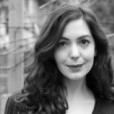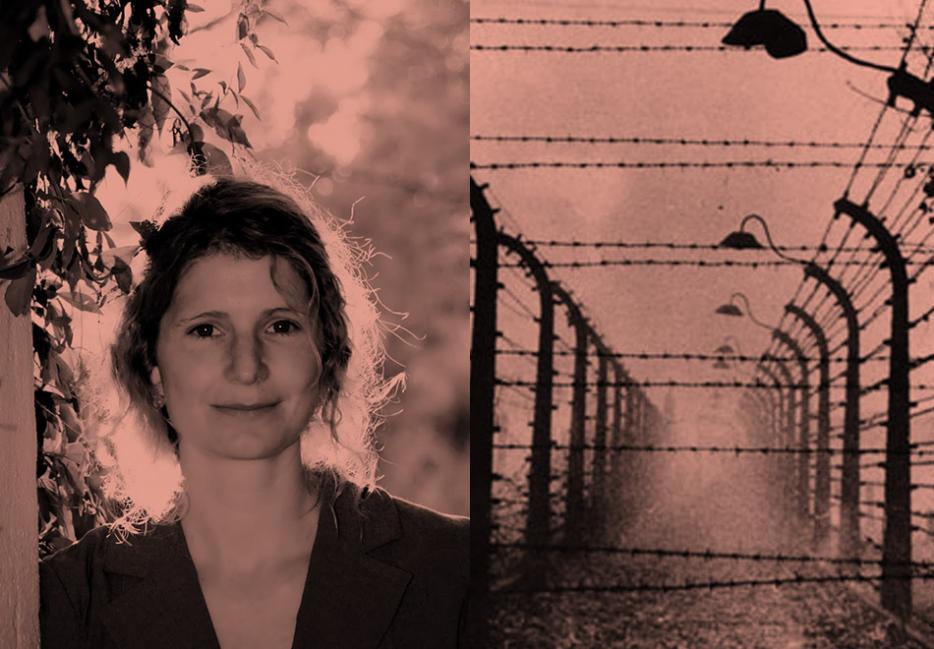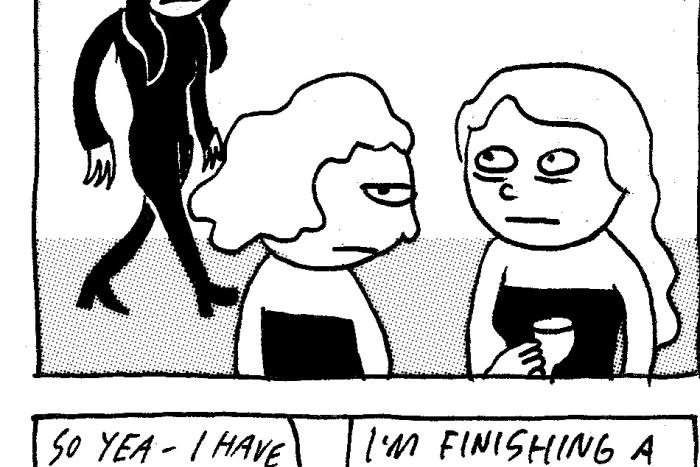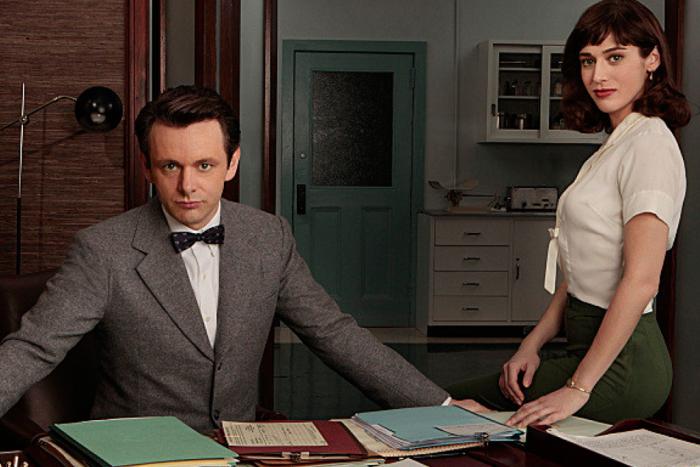I think of myself as a selfish reader because I fixate on writing that speaks to whatever aesthetic or intellectual question I’m already hashing out in my own work. (Thankfully, the questions have changed over time, though the underlying self-interest is consistent.) And I think of myself as a desperate reader because I’m convinced that if I don’t find this writing, I might become paralyzed by loneliness and lose my compulsion to write. I’m not sure if these tendencies make me ill-suited to review literature or profile other authors; they definitely make me a bit obsessive when I find writing that I love.
Like most of The Sentimentalists’ readership, I read Johanna Skibsrud’s first novel after it had already won the Giller Prize. From what I’d heard, I knew that the book was about her father’s time in Vietnam and that there were whisperings of her writing being “difficult.” I wasn’t prepared to find a novel whose prose felt revelatory to me in its intelligence, originality and beauty. I first met Johanna a few months later (she came to Queen’s University to give the annual Giller lecture; I was there as a grad student). Because I had a novel coming out that summer, the faculty invited me along to the post-talk dinner and, sitting next to Johanna over red wine and steak, I had to try very hard not to gush non-stop about her book.
John Banville said a few years ago that he thinks the novel as a form has become something tired and childish. I hope he’s since read Johanna Skibsrud. One of the most exciting qualities in her writing is that equally, in form and content, it refuses to condescend. It is intellectually satisfying in a way that feels as riveting as coming across bits of staggeringly articulate theory—you’re amazed that such elusive phenomena and slippery feeling has been expressed so actively and totally. Her long cumulative sentences seem to mirror the intuitive digressions and disclaimers of thought itself. “I’m very interested in the sentence level,” Skibsrud says, “both echoing and evoking the content of thought.” The delicate clarity that emerges has the exhilarating quality of being constructed with us on the page—her insights come slowly, methodically, honestly; they always feel earned.
Skibsrud’s new novel Quartet for the End of Time is more than twice the length of her debut, spanning thirty-odd years of history and moving across three continents. The title comes from the eponymous chamber piece by French composer Olivier Messiaen, which Skibsrud first heard at the Canadian Opera Company’s lunchtime series in 2007. (Look it up if you’re not familiar with it; it’s a constantly surprising composition). Skibsrud was struck not only by the piece’s strange beauty, but by the fact that it had been written and first performed in a German prison camp in 1941, which she learned from the program notes. “The seeming conflict between this gorgeous, complicated piece of music and the context in which it had been created led me to think about the complexities and continuities between art and war, hope and fear, and creativity and destruction,” she explains by phone from Tucson, Arizona.
Skibsrud is painstaking in describing the nature of art’s interaction with politics, calling it inclusive and interrogative, rather than partisan. “Art doesn't take sides; it explodes questions rather than dragging towards end points and answers. It doesn't exclude political questions; it just asks them differently.”
Around the same time that she was introduced to Messiaen’s quartet, Skibsrud first read about the Bonus Army riots—the 43,000-strong WWI veterans’ march on Washington in 1932, demanding cash redemption for their service certificates. She’d never heard of the movement before and started to question how and why certain events become historical while others are marginalized and forgotten. With the Messiaen story already in her mind, the two ideas interlocked into the beginnings of a novel.
One of the first topics I ask Johanna about during our call is the relationship between art and politics, particularly in the framework of war. At the centre of Quartet is the story of a small act of a betrayal committed under duress by a young girl; it’s a theme that’s reprised throughout the book with characters—including Messiaen himself—cooperating to lesser or greater degrees with the occupying enemy. Messiaen resisted the notion that his music could be used towards political ends, she tells me, explaining her interest in the tension between an artist’s impulse to safeguard her work from the influence of political context and the inherent impossibility of this pursuit. When I ask if she considers her own writing apolitical, she acknowledges that it can’t be.
“This novel is trying to explore how everything is connected. What I do believe very strongly and—if I were to put words in Messiaen’s mouth—would assume he believed as well, is that it’s not possible for any artist who really cares about the ideas behind his work to truly consider themselves apolitical.”
Nonetheless, Skibsrud is painstaking in describing the nature of art’s interaction with politics, calling it inclusive and interrogative, rather than partisan. “Art doesn't take sides; it explodes questions rather than dragging towards end points and answers. It doesn't exclude political questions; it just asks them differently.”
Artists, and the way they conceptualize the unique project of making art, is a central question in Quartet, and an obvious topic of discussion for Johanna and me. Two of the novel’s main characters—the siblings Alden and Sutton Kelly (a poet and a photographer/journalist respectively)—go about this project in different ways. “Alden and Sutton have contrasting directions in their explorations of art. Alden is looking to find the key that will unlock the surface to reveal what’s within, while Sutton becomes more and more distrustful of that approach,” Skibsrud says.
I mention a passage that I love and which seems to expand on this idea. Taking her lover’s face in her hands, Sutton thinks:
That it was a mistake, a madness—in art as equally as love—to assume that the truth existed somewhere beyond or beneath the surface of things. Because the harder, the deeper, she looked into Louis’s eyes, the less sure she was that she was seeing anything at all. When, on the other hand, she let her gaze rest on him lightly—letting the spray of colours around his black pupils (they were ringed like small suns) dance in the light and the shifting focus of her own eyes—she felt it. A powerful surge of something in her, which she knew could be nothing other (as in that first moment of contact, when the two of them had burst like clouds in each other’s arms) than purest love.
Skibsrud agrees that the passage is relevant and points out how nearly impossible it is to stick to Sutton’s conceptualization. “It’s so hard to get away from talking about that era’s movement in art (towards greater abstraction) while avoiding words like ‘within’ or ‘the root of’—words that immediately connote an inside and outside to things. And so it seems to me that there is constantly that tension between an idea of art that insists on moving towards an inner core and a desire to remain on the surface.”
The limitations of perspective are frequently thematized in Skibsrud’s writing, whether it's the narrator in her short story The Electric Man, who brings her fist to her eye to narrow—and, in so doing, concentrate—her field of vision, or the eight-year-old Sutton who stares at an apple and realizes that art exists in what she cannot see. I tell Johanna that this idea plays into my own struggle as a writer, a frustration in confronting my ability to generate thought outside a certain set pattern that, I guess, is tantamount to my intelligence.
“Yeah, I think that’s part of my fascination with it as well,” she responds, “that I’m always obsessed with the idea of limits, and always struggling with ways to exceed them in small and sometimes, hopefully, larger ways. The title of my story collection, This Will be Difficult to Explain, could really be the title for everything I’ve written and will write,” she laughs. “Our range of experience is so vast and what we continuously confront is not the limits of that experience but of ways of expressing it, even to ourselves, in order therefore to share them and make use of the in an interpersonal or, more broadly, in a social and political sense.”
To Skibsrud, this difficulty is at the heart of the artist’s project. I decide it’s a good opportunity to tread lightly around the question of whether good fiction need necessarily be difficult.
“I don’t think anything should be difficult for the sake of being difficult,” she says. “I think that, to a certain extent, it’s impossible to avoid being difficult because life is difficult and experience is difficult and expression is difficult, so I think that a lot of fiction, like so much art, has to struggle with that and, if it does so honestly, then it’s very often difficult.”
She goes back to the example I’ve mentioned of Sutton as a child in a museum, realizing both the limits but also the power of her own perception. “I think it’s key for me in that scene that Sutton begins to understands how she creates her world. I think we become obsessed with limits, and we tend to throw up our hands a lot, but there is an inherent power to perception and interpretation and I believe in the infinite power of expression. In that hope of moving past limits.”
This idea provides context for Skibsrud’s own multi-faceted career: she’s published five books (two books of poetry, the short story collection, and now two novels), completed a PhD on Wallace Stevens, in the winter she’ll begin teaching English Literature as an assistant professor at the University of Arizona. Skibsrud has spent the past two years working on a SSHRC-funded post-doctoral project that looks at process and the potential towards this notion of the infinite, as it relates to poetry. Titled The Poetic Imperative, the project considers poetry in broader terms, trying to find a more inclusive way of thinking about the form and its role in culture. “I wanted to think of ways of pushing beyond our obsession with end points, and to think of everything we do in terms of a process.”
“I feel like I can get into different spaces when I’m working in fiction, poetry or academic writing; they’re very refreshing head-spaces. I think that there are a few underlying questions that fuel all of them, certainly about perception and expression, the limits, the fine lines, the continuities that exist between inner and outer, what we perceive and how we translate and interpret that, and how that then becomes concrete and historical.”
Evincing this notion of history-turned-concrete, Johanna has included twenty pages of reproduced photos and images in the middle of the book, a section titled Interlude, to which she’s curious to hear my reaction. I realize that I haven’t given the images, or the role they play in the book’s structure, enough consideration, but do say that they made me think of something authorial—in the sense that the process of selection is implied. She says she hadn’t thought of it that way herself, but adds:
“I was thinking of mirroring the structure of Messiaen’s quartet, the eight movements, and in the middle there’s an interlude, so I was thinking very consciously of how I could incorporate what would feel like an interlude within text. I thought of John Dos Passos’ U.S.A. trilogy and his use of the camera’s eye, which makes for meditative, surrealist interruptions of a more realist prose. I wanted to try to find a way to get outside of language entirely, so that’s where the idea of images came from. And then I was thinking that art isn’t a complete break from language, in that language is so obviously and necessarily image based, so I saw it as trying to access, or encouraging the reader to access, another fundamental element of language by looking at the images.”
Messiaen was also fascinated by the rich aesthetic challenges of limits, and in Quartet, he suggests to one of his fellow prisoners (the poet Maurice Bonheur) that the attempt to surpass them is definitive of the artist’s role. It’s a definition that Skibsrud is constantly fulfilling herself, with writing that refuses to consider the reality it encounters as something set or preordained. Instead, her process attempts to re-imagine context and content simultaneously.
“Poetry and literature draw attention to the ways that we make meaning. Rather than accepting specific models of thought, and imagining that we can’t go outside them, they let us think of the process of making meaning, and therefore making reality, open-ended and ongoing. That is what I see as the poetic imperative—that which forces us outside of what we preconceive as the limits of thought and, therefore, action.”






